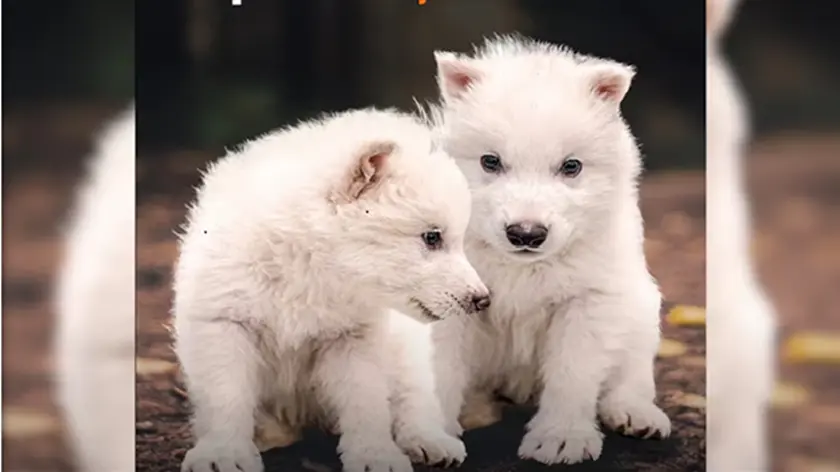
The scientific world has been set abuzz with the incredible news of the Dire Wolf Revival. After being extinct for over 12,000 years, this iconic predator has reportedly been brought back to life through the marvels of genetic engineering. For young to middle-aged Indian readers interested in the cutting edge of science and wildlife, this groundbreaking achievement by Texas-based Colossal Biosciences marks a significant moment in the field of de-extinction.
The Howl Returns: Understanding the Dire Wolf Revival
The Revival has been made possible through a combination of ancient DNA analysis, cloning techniques, and advanced gene editing, as reported by CNN. The first successful results of this ambitious project are two six-month-old pups, named Romulus and Remus. Even at this young age, these revived creatures already stand at nearly four feet tall and weigh over 36 kg, hinting at the impressive size the Revival has brought back.
Meet Romulus and Remus—the first animals ever resurrected from extinction. The dire wolf, lost to history over 10,000 years ago, has returned. Reborn on October 1, 2024, these remarkable pups were brought back to life using ancient DNA extracted from fossilized remains.
— Colossal Biosciences® (@colossal) April 7, 2025
Watch… pic.twitter.com/XwPz0DFoP5
Genetic Engineering Makes the Impossible Possible: The Science Behind the Dire Wolf Revival
It is understood that scientists at Colossal Biosciences utilized the DNA of the gray wolf, the closest living relative of the dire wolf, in this groundbreaking endeavor. The dire wolf, a top predator that once roamed North America, was known for its larger size, slightly thicker fur, and more powerful jaws compared to gray wolves. The successful Wolf Revival showcases the potential of modern genetic engineering to rewrite the history of life on Earth.
A Glimpse into the Past: Why the Dire Wolf Revival Matters
The dire wolf gained popular recognition through the HBO series ‘Game of Thrones’, but its existence was a reality thousands of years ago. The Wolf Revival offers a unique opportunity to study this extinct species and understand its role in ancient ecosystems. By bringing back creatures like the dire wolf, scientists hope to gain insights into extinction events and potentially contribute to conservation efforts for currently endangered species.
Please make a miniature pet wooly mammoth https://t.co/UxoIWmzq6h
— Elon Musk (@elonmusk) April 7, 2025
Romulus and Remus: First Pups of the Dire Wolf Revival
Born in October 2024 (Romulus and Remus) and January 2025 (a female pup), these young dire wolves were initially fed by a surrogate before transitioning to bottle feeding by the Colossal team. Currently residing in a secure 2,000-acre site monitored with advanced technology, the health of these pioneers of the Wolf Revival is being closely observed.
Unique Behaviour Observed in the Revived Dire Wolves
Interestingly, the behaviour exhibited by Romulus and Remus is noted to be distinct from existing wolf species. The typical puppy-like exuberance towards humans is reportedly absent. These young subjects of the Wolf Revival maintain their distance and tend to retreat when approached, even by their handlers. This reserved behaviour is believed to be characteristic of the original dire wolves, suggesting that certain ancestral traits have been successfully preserved in this Wolf Revival.
Elon Musk’s Take and the Future of De-Extinction
The news of the Wolf Revival has captured the attention of prominent figures, including billionaire Elon Musk. His playful reaction on X, expressing a desire for a miniature pet woolly mammoth, highlights the broader fascination and potential implications of de-extinction.
More Than Just Wolves: Colossal’s Vision for De-Extinction
The Wolf Revival is just the beginning for Colossal Biosciences. The company has ambitious plans to resurrect other extinct species, including the woolly mammoth, the dodo, and the Tasmanian tiger. While acknowledging the challenges, the success achieved with the Dire Wolf Revival provides significant hope for future de-extinction projects.
A Technological Milestone: The Impact of the Dire Wolf Revival
Ben Lamm, co-founder and CEO of Colossal, emphasized the significance of this achievement, stating that the Dire Wolf Revival demonstrates the effectiveness of their de-extinction technology. The fact that healthy dire wolf puppies were created using DNA from millennia-old remains underscores the remarkable advancements in genetic science that have made the Dire Wolf Revival a reality. This monumental event is expected to pave the way for further breakthroughs in the field, sparking conversations and debates about the ethical and ecological implications of bringing back extinct species.
Find more related content about
37 Takes for ONE K!ss! Actor Accuses Co-Star
Kolkata Metro Kiss: Viral Video Sparks Debate on Public Displays of Affection
Swiss Air Explicit Video Investigation: Privacy Breach Sparks Outrage
Tanvi Dixit’s Leaked Viral Video Sparks Nationwide Buzz
Pakistani News Anchor Mona Alam’s Private Video Leaked Online











